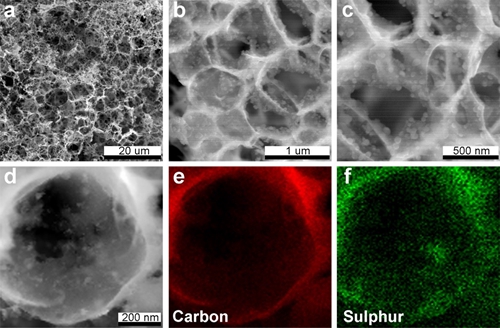
Sulfur is a promising cathode material for lithium–sulfur batteries because of its high theoretical capacity (1,675 mA h g−1); however, its low electrical conductivity and the instability of sulfur-based electrodes limit its practical application. Here we report a facile in situ method for preparing three-dimensional porous graphitic carbon composites containing sulfur nanoparticles (3D S@PGC). With this strategy, the sulfur content of the composites can be tuned to a high level (up to 90 wt%). Because of the high sulfur content, the nanoscale distribution of the sulfur particles, and the covalent bonding between the sulfur and the PGC, the developed 3D S@PGC cathodes exhibit excellent performance, with a high sulfur utilization, high specific capacity (1,382, 1,242 and 1,115 mA h g−1 at 0.5, 1 and 2 C, respectively), long cycling life (small capacity decay of 0.039% per cycle over 1,000 cycles at 2 C) and excellent rate capability at a high charge/discharge current. Nature Communications, 2016 |

